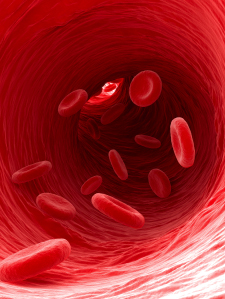Your basket is currently empty!
WhatCausesAdverse
What causes adverse reactions to Factor VIII treatment?
ProImmune REVEAL® is used in a major study into the immunogenic epitopes of recombinant Factor VIII
Steinitz, K. et al. (2012). CD4+ T-cell epitopes associated with antibody responses after intravenously and subcutaneously applied human FVIII in humanized hemophilic E17 HLA-DRB1*15:01 mice. Blood. 119(17):4073-82. [PubMedID:22394599]]
| Patients with severe haemophilia rely on treatment with recombinant Factor VIII (FVIII) to ameliorate their condition and allow them to live normal lives. However, at least a quarter of patients treated with replacement FVIII develop neutralizing antibodies against the ‘foreign’ protein and this renders the treatment ineffective.
Researchers at Baxter BioScience wanted to understand how these anti-drug antibodies develop, by understanding which portions of the FVIII protein they are targeted against. Antibody-producing B cells require cognate interactions with CD4+ helper T cells and so finding the epitopes presented to CD4+ T cells is essential. |
 |
To identify the CD4+ T cell epitopes likely to be important in antibody responses against FVIII, Katharina Steinitz and her colleagues developed a new model mouse. The mouse was missing all of its MHC Class II molecules, and instead expressed a chimeric HLA-DRB1*15:01 molecule, with the human peptide-binding regions and a mouse scaffold.
The team hoped that this mouse would recapitulate human HLA-DRB1*15:01 antigen presentation to CD4+ T cells. When the mice were treated with recombinant human FVIII, some of the cohort did indeed develop anti-FVIII antibodies, and the CD4+ T cells involved in these responses were shown to be polyclonal, just like the CD4+ T cells in humans making an anti-FVIII response.
“The Baxter scientists asked ProImmune to test the 6 most common HLA-DRB1 alleles” |
Having demonstrated that their mouse could indeed mimic a human response to FVIII, the next step was to create hybridoma clones of individual responding T cells, so that the immunogenic T cell epitopes of FVIII could be characterized. Peptide epitopes were identified using a matrix of peptide pools with each responding clone. From over 50 clones isolated, 8 peptides were found to dominate the responses. The mouse results were confirmed using dendritic cells from a HLA-DRB1*15:01-expressing human blood donor. When incubated with FVIII, these dendritic cells could stimulate responses from the mouse T cell hybridoma lines. The same dendritic cells couldn’t stimulate a response from T cell hybridoma cell lines from conventional mice, confirming the human DRB1*15:01 specificity of the identified epitopes.
The really important question, though, is how far do these results reflect the human population response to FVIII? Only around 8% of the world population expresses DRB1*15:01, and it was important to find out if these 8 new FVIII T cell epitopes could elicit responses in individuals with other HLA types. For this, the team at Baxter used the ProImmune REVEAL® assay. At ProImmune, we have over 50 different HLA molecules available for testing in our in vitro MHC-peptide binding assays. The Baxter scientists asked ProImmune to test the 6 most common HLA-DRB1 alleles, to investigate how promiscuous binding of their newly-discovered epitopes were. The ProImmune REVEAL® assay showed that all of the peptides identified could bind to at least 3 of the MHC alleles tested, and detailed measurements of the kinetics of binding showed that many of these interactions were long-lived. Since a stable interaction between peptide and MHC is necessary for a peptide to perform as an epitope, these data suggest that the DRB1*15:01 FVIII epitopes are also likely to be epitopes in patients with a range of other HLA types.
This work marks a great step forward in understanding why haemophilia treatments sometimes fail, and will doubtless inform the research of those at Baxter and in other labs as they seek to reduce the immunogenicity of future treatments.
